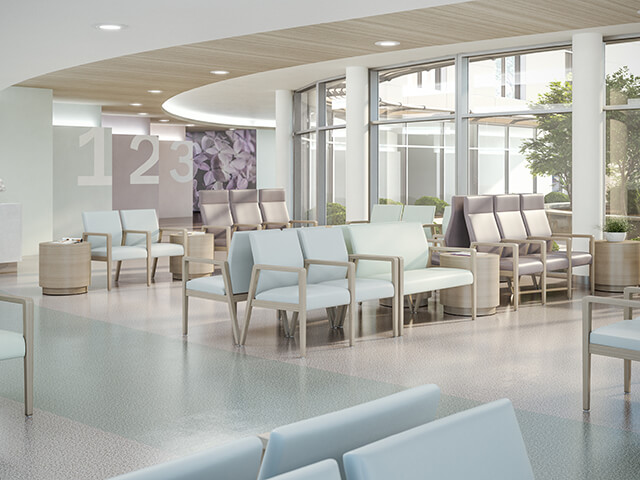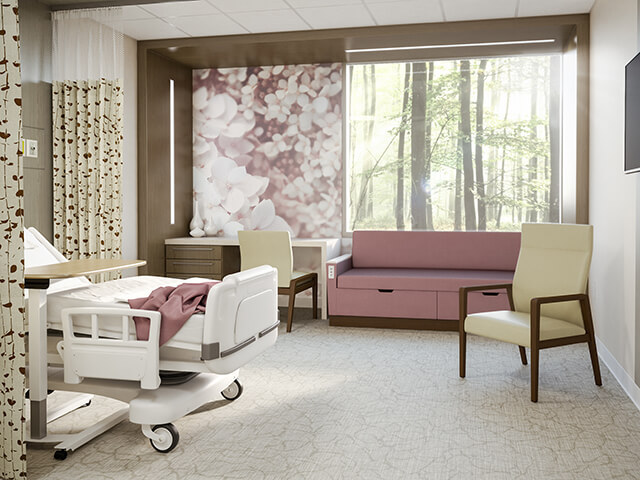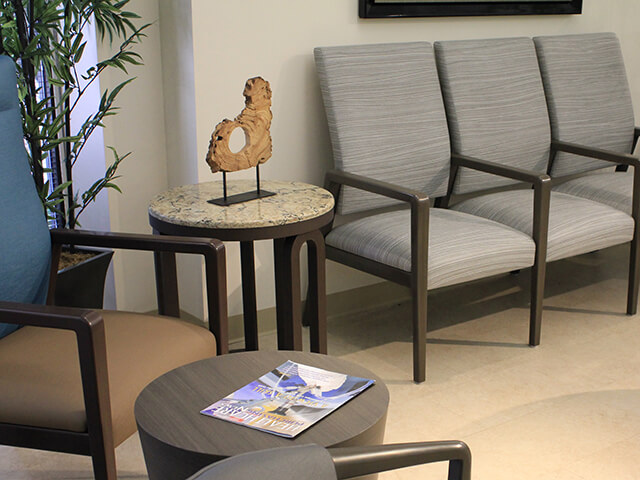What is designing for patient wellness? Does that mean the design will make you well? Perhaps. What it will definitely do is make you feel comfortable, feel cared for and feel better. We are becoming more aware of the role the surroundings play in our overall good health. How does design affect how patients respond to treatment in a healthcare environment? Think about it, if the aroma of a good meal can positively affect appetite, what a patient senses in a hospital can positively affect how he or she feels.
Patient Care and Wellness: Focus on Furniture
Enter a hospital lobby, the sight of chipped and worn chair arms and legs will only make whatever ails you worse. That look does not reassure your family and friends who come to visit either. Let’s face it, healthcare settings see a lot of activity, the sheer numbers of people in addition to the gurneys and medical carts have an adverse effect on furniture and no one wants to see that. Furniture seating and tables that are pristine, can withstand the constant cleaning and with finishes that cannot be compromised and become breeding grounds for infections, of course, all designed beautifully, are what healthcare patients and visitors are drawn to.

Lighting Impacts Health
Lighting in healthcare is essential. Obviously, lighting improves sight to perform tasks. Also, lighting is important for its healing properties when it comes to patient care and wellness. The right light in a healthcare wellness setting can be beneficial to both patients and staff. Studies have shown when the appropriate lighting is incorporated in healthcare environments it can help reduce depression and improve alertness and mood. Medical professionals use light to treat medical conditions, including hyperbilirubinemia in babies. Studies show people prefer natural to artificial lighting, in wellness design for healthcare patients that refers to windows that emit natural light

Formidable, functional floors
Each space in healthcare has specific flooring requirements based on the area’s clinical assignment and staffing requirements. To reduce noise levels in patient rooms and corridors, use flooring designed with high sound absorbing properties. To reduce staff fatigue, floors should have some texture in the design as needed to prevent slips and falls. Think of floors in every healthcare environment as welcome mats of care. Places where small children inevitably play. Floors in healthcare must be easily and deeply cleaned and look like new every day. If your environment does not have it, visitors will find a location that does.

